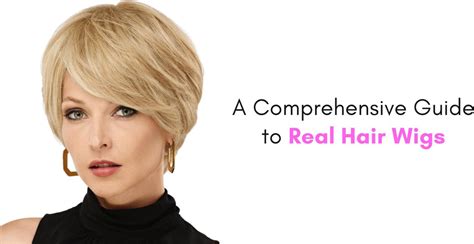Introduction

Hair and wigs have been integral parts of human adornment and self-expression for centuries. Whether you’re seeking to enhance your natural locks or embrace transformative hairstyles, the world of hair and wigs offers endless possibilities. This comprehensive guide will delve into the fascinating realm of hair and wigs, empowering you with the knowledge to make informed decisions and achieve your desired look.
Types of Hair and Wigs
Human Hair Wigs
Crafted from 100% human hair, these wigs offer an unparalleled level of naturalism and realism. They can be styled, colored, and heat-treated like your own hair, providing versatile and customizable options. However, human hair wigs tend to be more expensive than synthetic wigs.
Synthetic Hair Wigs
Made from synthetic fibers such as nylon or acrylic, synthetic wigs are less expensive and more resistant to tangling and shedding. They come in a wide variety of colors, styles, and textures, allowing for bold and dramatic looks. However, synthetic hair wigs can feel less natural to the touch and may have a shorter lifespan than human hair wigs.
Pain Points: Identifying Your Needs
- Thinning or receding hair
- Alopecia or other hair loss conditions
- Desire for transformation or a change in appearance
- Medical or cultural reasons
Motivations: Fueling Your Hair Journey
- Enhance confidence and self-esteem
- Express creativity and individuality
- Disguise hair loss or scalp conditions
- Protect hair from damage or styling products
Choosing the Right Wig
Selecting the perfect wig requires careful consideration of several factors:
Face Shape:
- Oval: Most wig styles suit oval face shapes.
- Round: Wigs with volume at the crown and loose, flowing lengths flatter round faces.
- Square: Wigs with soft layers and side-swept bangs balance the angular lines of square faces.
- Heart: Wigs with wide side parts and full, bouncy curls enhance heart-shaped faces.
Hair Texture:
- Straight: Wigs with sleek, straight textures are ideal for a classic and professional look.
- Wavy: Wigs with natural waves add volume and movement to hair.
- Curly: Wigs with tight curls create a dramatic and voluminous look.
Length and Style:
- Short: Short wigs offer a low-maintenance and modern style.
- Medium: Medium-length wigs provide versatility and can be styled in various ways.
- Long: Long wigs add length, volume, and allure to any look.
Accessorizing: Enhancing Your Wig
- Headbands: Add a touch of color or pattern to your wig.
- Scarves: Tie a scarf around your head to create a stylish and sophisticated look.
- Hats: Protect your wig and add a fashionable element to your outfit.
Common Mistakes to Avoid
- Choosing a wig that is too small or too large: Ensure the wig fits securely without causing discomfort or shifting.
- Over-styling your wig: Avoid excessive brushing, heat styling, or chemicals, which can damage the fibers.
- Not washing your wig regularly: Maintain the hygiene and longevity of your wig by washing it according to the manufacturer’s instructions.
Pros and Cons of Hair and Wigs
Pros:
- Enhance appearance: Transform your look with a variety of hairstyles and colors.
- Conceal hair loss: Discreetly cover up thinning hair or scalp conditions.
- Protect hair: Shield your natural hair from damage caused by styling products or environmental factors.
- Boost confidence: Improve your self-esteem and feel more confident with a well-styled wig.
Cons:
- Cost: Human hair wigs can be expensive, while synthetic wigs may have a shorter lifespan.
- Maintenance: Wigs require regular care and maintenance to keep them looking their best.
- Discomfort: Some wigs can be uncomfortable to wear for extended periods.
- Limited breathability: Synthetic wigs may not allow for proper scalp ventilation.
Creative Applications for Hair and Wigs
Beyond their traditional uses, hair and wigs offer a range of innovative applications:
Cosplay: Create authentic and immersive costumes for cosplay events.
Theatre and Performance: Enhance characterization and create dramatic looks for stage productions.
Medical and Therapeutic: Provide comfort and support for patients experiencing hair loss due to medical treatments.
Fashion and Photography: Inspire creativity and showcase bold and unconventional styles.
Data and Figures on the Hair and Wig Market
- According to Statista, the global hair extensions and wigs market is projected to reach $10.5 billion by 2025.
- The American Hair Loss Association reports that approximately 50% of men and 25% of women experience hair loss by age 50.
- The wig industry has seen a surge in demand due to the growing popularity of cosplay, drag, and alternative fashion trends.
Conclusion
Hair and wigs have evolved into essential tools for self-expression, confidence, and haircare. Understanding the different types and benefits of wigs, as well as the factors to consider when choosing one, empowers you to make informed decisions that enhance your personal style and well-being. Whether you’re seeking a transformative look or a discreet solution for hair loss, the world of hair and wigs offers endless possibilities to elevate your crown.
Additional Resources
- American Hair Loss Association: https://www.americanhairloss.org/
- International Association of Trichologists: https://www.iat-org.org/
- The Wig Experts: https://www.thewigs.com/
